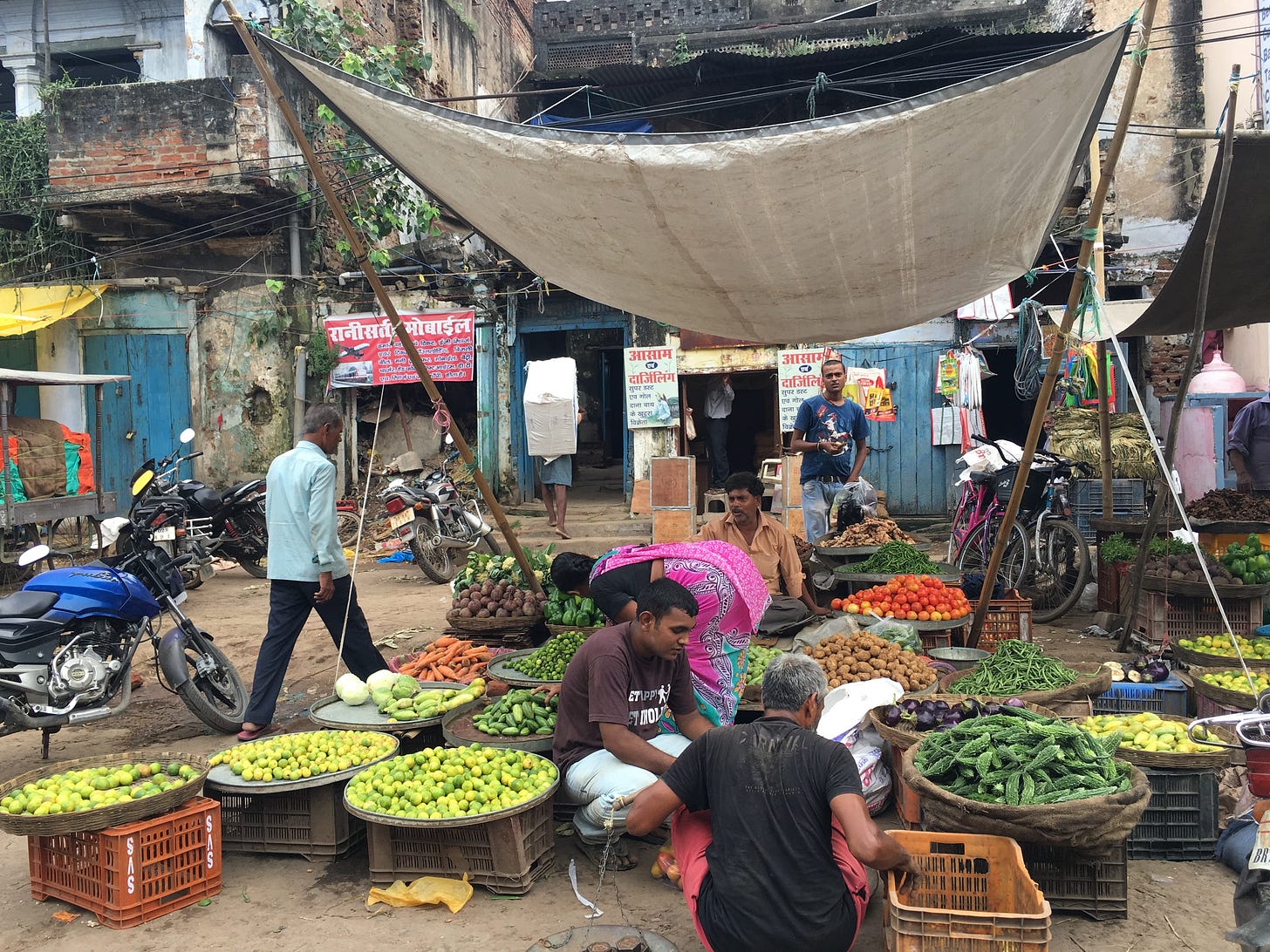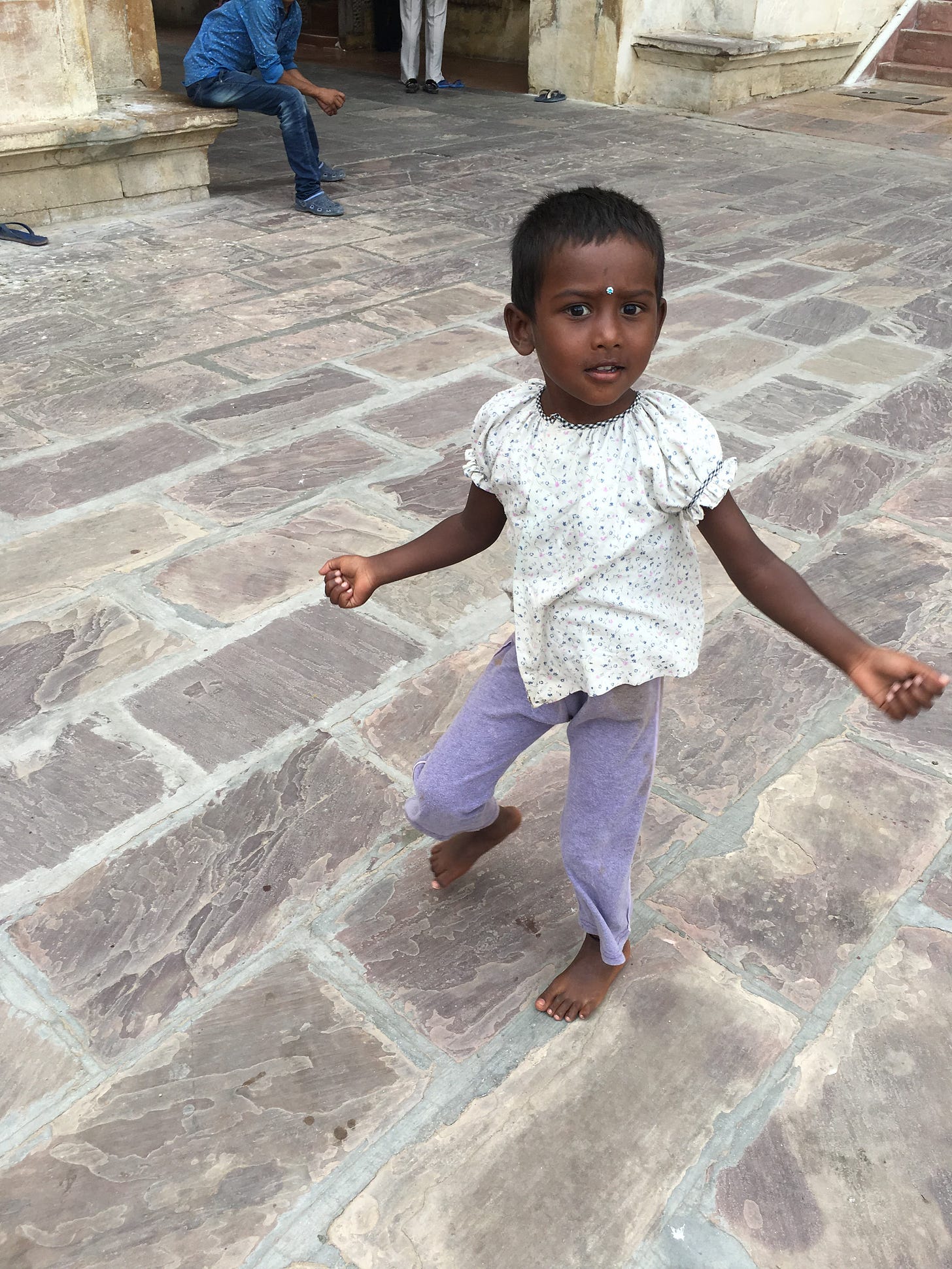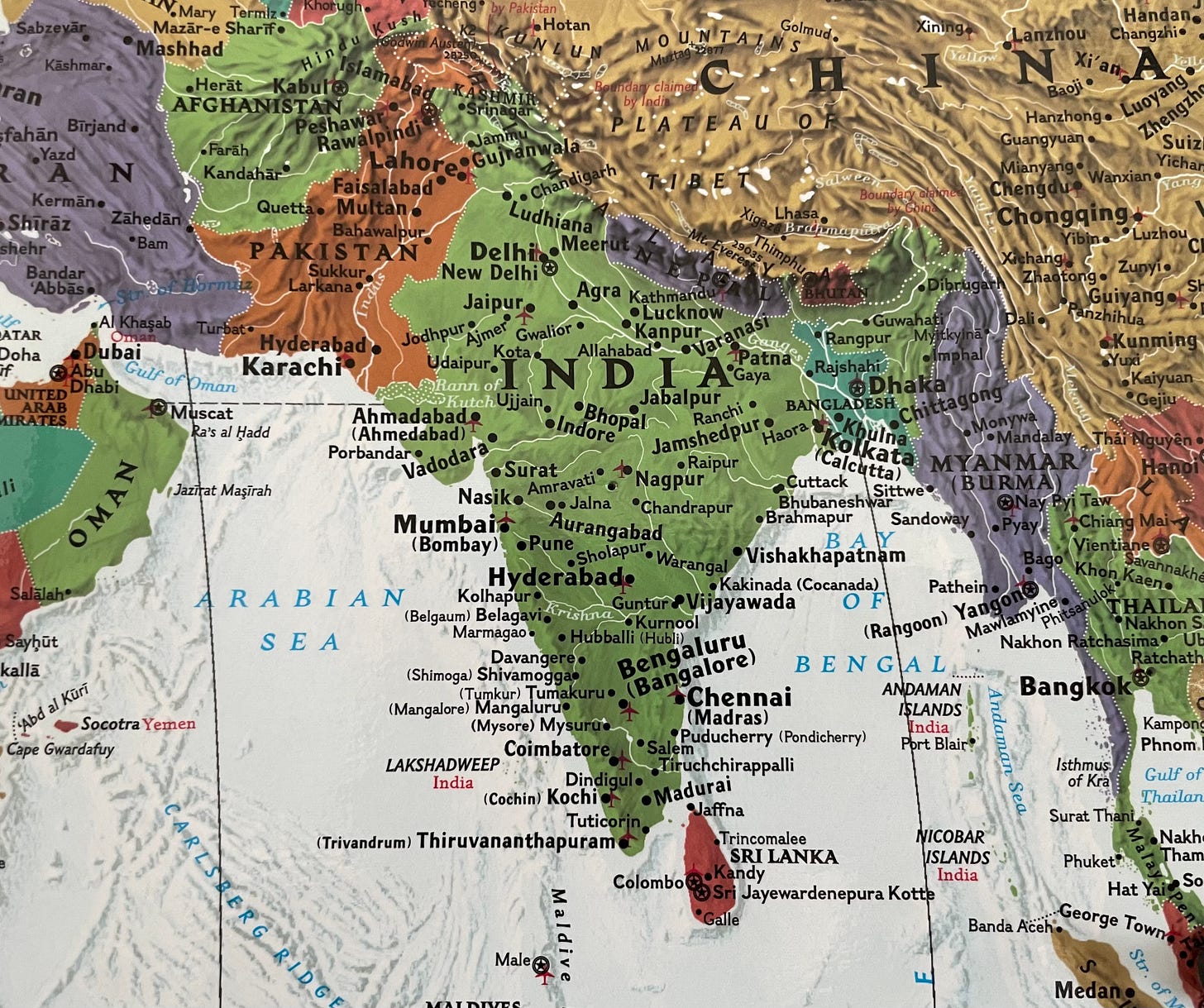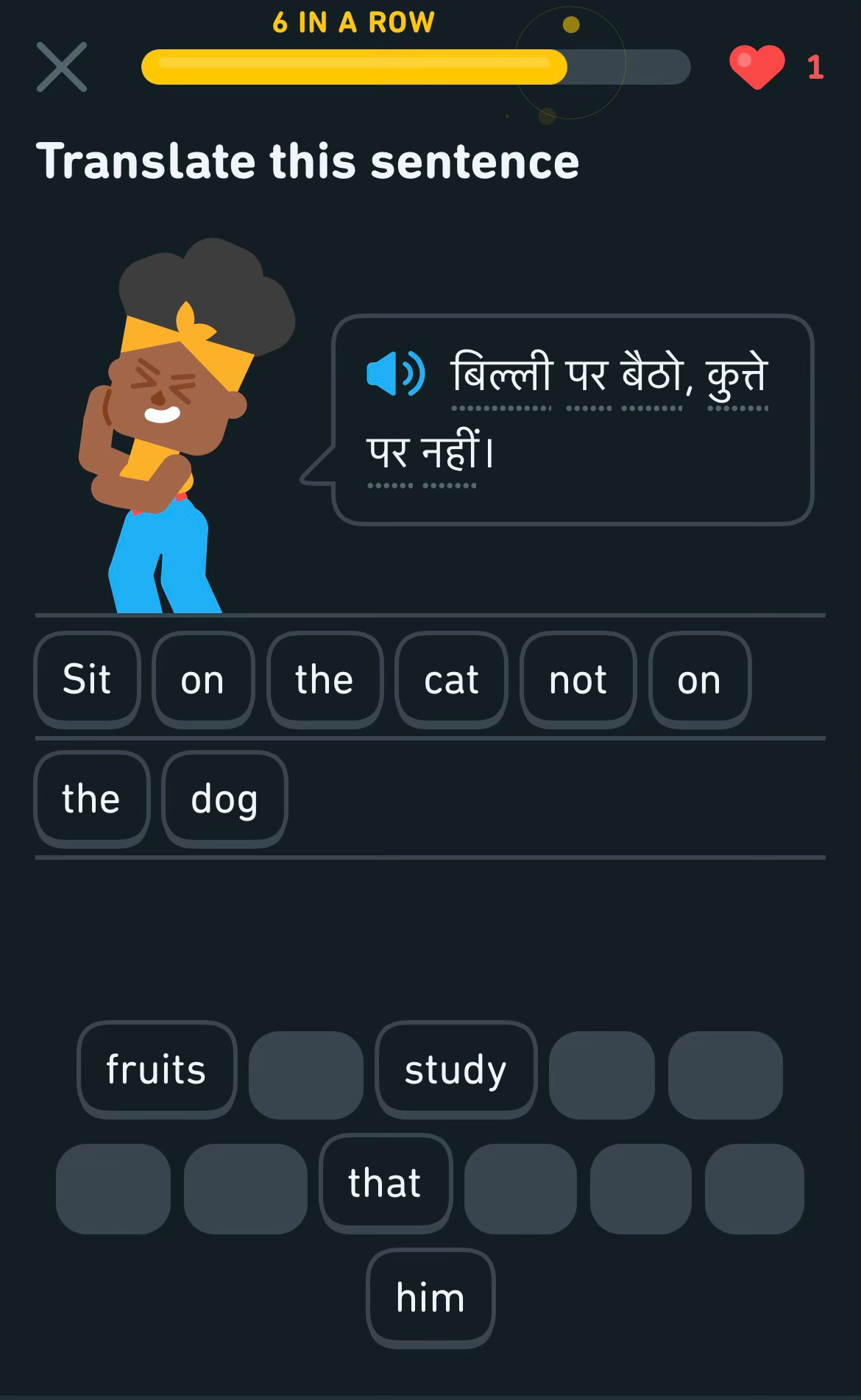I’ve always had an affinity for languages.
I’d owe much of this to growing up bilingual, but must also give proper credit to my childhood friends, who came from a variety of backgrounds — Mexican, Iranian, Chinese — and spoke the respective languages with their families.
Whereas I’d study for hours before math tests and barely scrape by with a B (or lower), languages seemed to… click. A pleasing string of sounds full of mysteries waiting to be unraveled, languages drew me in. They continue to intrigue me.
English is, by far, the language in which I am most comfortable. But I have studied, or possess varying levels of fluency in, Gujarati, Hindi, Spanish, and Italian.
Last year, I felt a nagging desire to immerse myself in Hindi once again. I’ve been exposed to the language since childhood, through films and songs primarily, but didn’t learn to converse until I visited India for seven months in 2016. Realizing I’d done little to practice upon returning to the states, I wanted to dive back in.
Since mid-November, I’ve been studying Hindi daily, using a mix of Duolingo, movies, songs, and good ol’ Google translate.
Here’s a little backstory and what I’ve gained from the experience so far. If you’re embarking on your own linguistic endeavors, I hope it sheds some insights.
My Relationship With Hindi
Though I was born in the U.S., I learned to speak Gujarati prior to learning English. This language is native to the western Indian state of Gujarat, from where my family originates. My paternal grandparents were adamant about me learning our mother tongue, and I’ve only now begun to appreciate their insistence.
Gujarati and Hindi both belong to the Indo-Aryan language family. Over 800 million people — concentrated mostly in northern/western/central/eastern India, Pakistan, Nepal, Bangladesh, the Maldives, and Sri Lanka — speak languages deriving from this linguistic lineage.
Though my grandparents taught me Gujarati conversationally, the media we consumed together — soap operas, the latest blockbusters, songs — was largely in Hindi.
As northern India’s lingua franca, many people learn Hindi formally in school and/or organically through ongoing exposure, alongside the language native to their states (Bengali, Punjabi, Marathi, Gujarati, to name a few).
Once I started school and learned English, my Gujarati fluency stagnated. I still spoke the language daily with my grandparents, though I never learned to read, write, or express more complex thoughts and emotions.
Through years of consuming Hindi media, I picked up a baseline understanding of the language. Gujarati and Hindi share many of the same — or similar — words, so while they aren’t mutually intelligible, it’s straightforward enough for a speaker of one language to acquire the other.
(A quick aside: the most common southern Indian languages — Telugu, Tamil, Malayalam, Kannada — stem from the Dravidian language family. It’s actually believed that Dravidian languages were more widely-spoken in South Asia prior to the spread of Indo-Aryan ones. Fascinating.)
Having grown up on a consistent musical diet of Hindi songs from the late nineties and early aughts, the language has always possessed a poetic, alluring quality to me. It’s the language of my daydreams; the language that provides a steady soundtrack to my life.
It wasn’t until my gap year in India that I became fully immersed in Hindi for the first time. Hindi allowed me to build connections and share simple conversations with all kinds of people. It also led me to reconnect with — and build a newfound appreciation for — my South Asian heritage.
Practicing Hindi each day the past three months has certainly improved my fluency. But beyond this, it’s made me reflect on the language learning process itself, as well as how much it can teach us about humanity as a whole.

Learning a Language Is Humbling
This Hindi journey has reminded me of how much I don’t know — how much I will never know. (According to the University of Maryland, there are over 7,000 languages in the world!)
Studying Hindi has also made me feel like a kindergartner again, particularly when reading and writing. My hand shakes when I attempt an अ (“a”) or a ल (“la”). While reading, my eyes and mind move at a glacial pace, attempting to string unfamiliar letters into cohesive words (and getting quite flustered at times).
I’ve definitely acquired a newfound respect for people who’ve developed fluency in a non-native language.
I also think of friends and family members who’ve had to learn English after moving to the U.S., and the challenges they’ve faced when adapting to an entirely different language. On top of this, there’s the self-consciousness of speaking to native speakers, and worrying about accents or being misunderstood. It’s an emotional experience as much as it’s a linguistic one.
Learning a Language Tests Your Patience
When learning a new language outside of an academic setting, there’s no precise way to measure your progress. You can’t take a brain test to determine your fluency percentage or rely on a formula to predict how much you’ll improve in a month, six months, or a year.
I’m trying to catch myself when I enter that perfectionistic, rigid mindset — the one that berates me for making errors or needing to practice something several times before it sticks.
I’ve also had to remember that I’m not trying to get anywhere. Studying Hindi is more about enjoying the process itself; about cherishing all of the new experiences/connections that come up.
There’s no final destination to reach, or shiny award waiting for me at the end of a finish line. And in many ways, that’s quite liberating. It nudges me to take it slow, and to be patient with myself as I expand my abilities.
Learning a Language Builds Confidence
I’ve realized that I’m not straining my attention as much to capture the meaning of things. When I overhear conversations in Hindi — at medical appointments, the grocery store, or even in my neighborhood — I’m able to comprehend more. Similarly, while watching Hindi-language movies now, I peek down at subtitles a little less. I also find myself translating sentences from English to Hindi, sort of instinctually.
When it comes reading, I can (very slowly) string small words together. The writing part is still quite intimidating, but I trust that it’ll become less so over time.
That’s all to say that improving upon my Hindi skills has brought up a lot of newfound confidence. It’s also reminded me that I can tackle challenges by consistently showing up and putting in the effort.
Learning a Language Is Most Effective When Done With Others
Though my current methods have provided a useful foundation for jumping back in, they feel incomplete. In terms of learning the language conversationally, I picked up the most Hindi when traveling through India. For many months, I spoke it daily (albeit in very broken terms with ample English and miming peppered in) and listened to others around me chat in the language.
Hearing and practicing a language in person offers context; it offers a glimpse into the nuances (like tone and slang) that carefully-structured courses can’t.

Duolingo has helped with learning the Devanagari script and picking up more vocabulary. I plan to keep using the app, while also consuming Hindi-language media daily. But the next phase of my studying will involve more conversational practice, as well as a speaking-focused course that my friend Kunashni shared.
I also look forward to practicing in India itself, whenever I visit again.
Languages Can Do So Much for Us
I often think of that famous quote by Nelson Mandela: “If you talk to a man in a language he understands, that goes to his head. If you talk to him in his own language, that goes to his heart.”
It’s so true. Languages open us up to relationships and experiences that we would’ve never otherwise imagined. They remind us that there are myriad ways to make sense of the world; that each corner of the globe has its unique and fascinating way of doing so.
And research shows it’s never too late to learn a language! According to studies, language learning can offer many protective brain benefits, like improvements in attention, memory, and executive control. A 2020 meta-analysis even found that it can protect against neurodegenerative conditions such as dementia.
So, if you’ve been looking for a sign to start that Arabic Duolingo course, join an introductory Japanese class, or brush up on your Spanish, consider this your sign. (Who knows, maybe you’ll end up booking that trip, too!)
Until next time,
Brina
🌹Reflection
What’s your own relationship with languages — those you grew up speaking, learned in school, and/or picked up in adulthood? What language(s) would you love to learn? If you’ve studied a new language, what have been the most helpful methods in building fluency?
🎨 Creativity Corner
Fun activity: “Can We Guess Where In The United States You’re From Based On Your Dialect?” (this Babbel quiz was surprisingly accurate)
Book: Eyeliner: A Cultural History by Zahra Hankir (I loved this in-depth exploration and analysis of eyeliner’s role in various cultures, as well as an explanation of its historical origins)
YouTube video: “Why I’m crushing my own dreams for good” (Katherout has the most relatable, witty videos and this one on perfectionism is no exception)
Movie: Zindagi Na Milegi Dobara (a feel-good Hindi movie about three best friends that take a bachelor trip to Spain, where they face their biggest fears and confront the mindsets that hold them back — I never get tired of this one!)
Substack read: “How Are You? (for Real)” by
(a psychiatrist and the author of Real Self-Care shares helpful tips for more truthfully answering one of the most common questions)
🐶 Prem’s Thoughts on Hindi
“My name means ‘love’ in Hindi, so I guess the language is pretty cool. I am a very loving dude. And honestly? It’s hard not to love me! Slowly but surely I’m getting more of the scared aunties to realize I’m just a fluffy little boy who wants lots of cuddles (and cheese).”





